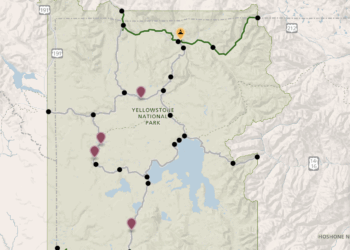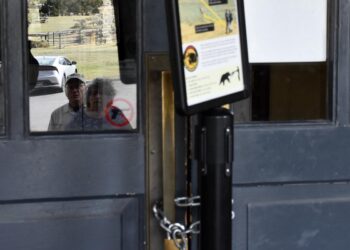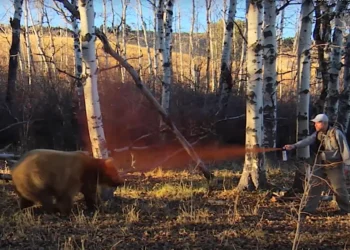By Marshall Swearingen MSU NEWS SERVICE
BOZEMAN – In Yellowstone National Park’s scenic Lamar Valley, where wolves and other wildlife are commonly sighted in sagebrush flats tucked amid mountains, a cluster of cabins marks where bison were brought back from the brink of extinction a century ago. Behind the rustic log exteriors, however, a high-tech project is underway as Montana State University helps the Lamar Buffalo Ranch become more energy-efficient and less reliant on fossil fuels.
“There are one or two sensors in every building,” said Megan Oaklief, an MSU junior majoring in mechanical engineering technology. The sensors measure how much electricity and propane is used by each of the 16 cabins and handful of larger buildings, including two ranger residences.
The Lamar Buffalo Ranch is now used as an educational facility that hosts K-12 students from around the country. Solar panels were installed in the ’90s and were upgraded in recent years, and a small hydroelectric generator was added. The facility is off-grid, meaning no external electrical lines or natural gas pipes reach it.
Propane is still used for cooking, heating water and running a generator that provides supplemental electricity, so opportunities remain for making the facility more self-sufficient, according to Lynn Chan, a project manager for Yellowstone National Park.
“We’re hoping MSU can help us understand how much energy we’re using, how it’s being used, and, looking to the future, how we can continue to reduce our energy use,” Chan said. The effort comes as some of the cabins are being renovated to add insulation and other efficiency measures. “Our goal is to try and reduce our propane use.”
For Kevin Amende, associate professor in MSU’s Department of Mechanical and Industrial Engineering, the off-grid buildings present a valuable case study in how to balance the daily and seasonal variations in solar and hydroelectric energy production with the equally dynamic energy use resulting from groups of visitors coming and going.
According to Chan, the results could have an impact beyond the Lamar Buffalo Ranch. “We would like to use this as a model for other places in the park,” she said.














